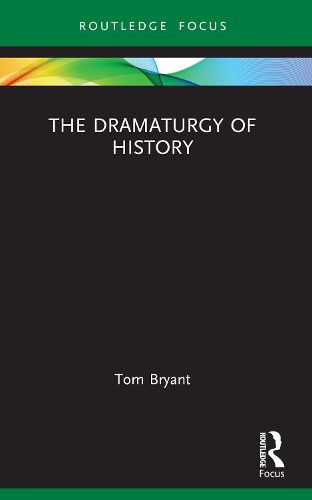Readings Newsletter
Become a Readings Member to make your shopping experience even easier.
Sign in or sign up for free!
You’re not far away from qualifying for FREE standard shipping within Australia
You’ve qualified for FREE standard shipping within Australia
The cart is loading…






In this book, dramaturg Tom Bryant shares with readers and writers his insights into the process of historical adaptation.
The book uses case studies from Bryant's collaborations with playwrights on successful Broadway and regional productions to work through the fundamental questions of historical adaptation: Why do you want to adapt history? For what purpose? What is your approach? How does that approach affect the portrayal of events? How does that choice by the playwright and the dramaturg then determine the framing and focus in the story, the selection of the key events and the choice of characters? What is the meaning you want the audience to take away from the events? How is your adaptation of past events relevant to contemporary times? In addition, the author explores the moral and ethical responsibilities involved for the dramaturg and the playwright in the adaptation of history and how issues of diversity, equity and inclusion impact the presentation of historical material.
This is an indispensable resource for anyone whose craft brings them to the task of adapting historical material for the stage-in postgraduate work, teaching or professional practice.
$9.00 standard shipping within Australia
FREE standard shipping within Australia for orders over $100.00
Express & International shipping calculated at checkout
In this book, dramaturg Tom Bryant shares with readers and writers his insights into the process of historical adaptation.
The book uses case studies from Bryant's collaborations with playwrights on successful Broadway and regional productions to work through the fundamental questions of historical adaptation: Why do you want to adapt history? For what purpose? What is your approach? How does that approach affect the portrayal of events? How does that choice by the playwright and the dramaturg then determine the framing and focus in the story, the selection of the key events and the choice of characters? What is the meaning you want the audience to take away from the events? How is your adaptation of past events relevant to contemporary times? In addition, the author explores the moral and ethical responsibilities involved for the dramaturg and the playwright in the adaptation of history and how issues of diversity, equity and inclusion impact the presentation of historical material.
This is an indispensable resource for anyone whose craft brings them to the task of adapting historical material for the stage-in postgraduate work, teaching or professional practice.